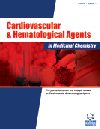
Full text loading...

Coronary collaterals are the feeding bridges between the main epicardial arteries, and research has shown that this collateral development plays a crucial role in myocardial performance, especially in patients with coronary artery disease. However, the evolution of these collaterals has not been fully explained.
In this study, we aimed to reveal the effect of CD31 on coronary collateral development.
Methods: As a result of coronary angiography performed in our clinic, 89 patients with coronary artery disease and 90 patients with normal coronary arteries were included in the study. Collateral development degrees were recorded from the angiographic images of the subjects. CD31 values were compared between the group with coronary artery disease and the control group. In addition, the coronary artery disease group was divided into subgroups according to the collateral development in terms of good collateral development and poor collateral development, and the factors that may affect the collateral development were tried to be determined.
CD31 levels were significantly higher in the group with coronary artery disease compared to the control group (p <0.001). In addition, CD31 levels in the subgroup with good collateral were significantly higher than in the group with weak collateral (p <0.001). In the correlation analysis, a significant positive correlation was found between serum CD31 level and SYNTAX score, age, glucose, and rentrop grade. Multivariate logistic regression analysis showed CD31 to be an independent predictor of good coronary collateral development.
CD31, a marker of angiogenesis, may be involved in coronary collateral development.